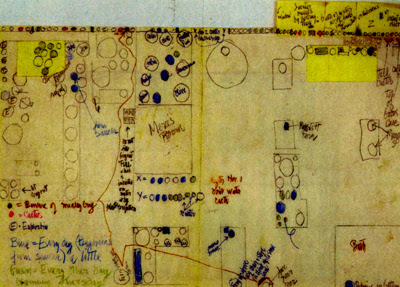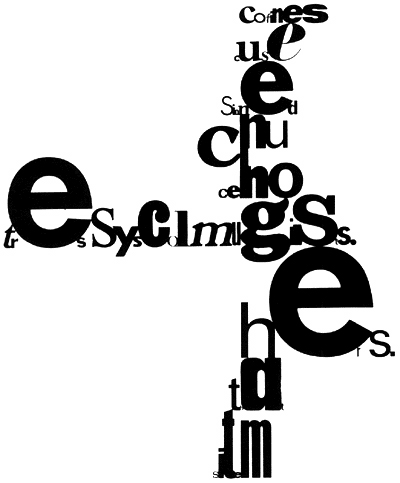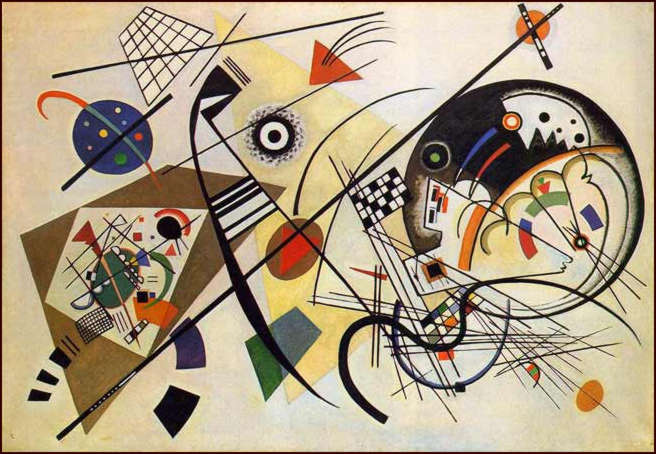Bridget Riley came to prominence in the 1960's during the Op Art movement. Riley counts Paul Klee amongst her influences and recently arranged a show at the Hayward Gallery. Her images create a dizzying optical effect and create the illusion of movement. All an image is, is pigment on a surface and these images by Riley a flat black lines on canvas. However, they seem to move, rotate and can not be look at too long. Riley used Rhythm and Repetition to create her work and knew that a simple line is transformed when repeated.
Barbara Brown 'Spiral' fabric design
Chrissie Shrimpton and Ossie Clark, 1965 by David Bailey
A modern Op Art influenced fashion shoot by Solve Sundsbo
Op Art bold use of stark black and white led to it be incorporated in 1960's popular culture. Op Arts influence can be seen in the work of fashion designers, advertising, magazine layouts and still has an influence today. Go here to find an Op Art Adobe illustrator tutorial.
The merging of sound and vision was also being explored in avant garde films of the 1920's. Moholy-Nagy's 'Light Prop for an Electric Stage' is a development of his earlier work with photography, photograms and painting. It is a sculpture, a piece of Kinetic Art and a device he used to make an early abstract experimental films.
Also see Fernand Leger.
Also during the 1920's Marcel Duchamp created a series of kinetic works that he conceived as optical toys. Making apparent the deceptions that visual perceptions play on our minds fascinated Duchamp.
Beginning as a series of lithographs, The Rotoreliefs work as a series of gyrating discs that the artist dubbed an 'Anemic Cinema'. When the discs are spun on a turntable, they appear as three-dimensional objects, making visual symphonies that also parody traditional art.
Kandinsky's urge to give visual form to the ephemeral qualities of music is basic human nature. Traditionally live music was often part of a greater performance - colour, dance and light were all used with music.
Mary Ellen Bute made a series of films called 'Seeing Sounds Films'. Her first colour film 'Synchromy No.4:Escape' (1937) tells the story in abstraction of an orange/red triangle set to the music of Bach -'Toccata in D Minor'. (see Also Norman Mclaren - Spook Sport 1940).
Ultimately avant garde art filters down into the mainstream - A Mondrian bag, A Bridget Riley dress to modern surreal adverts. This Advert for Total Oil (1958) by Andre Sarrut shows sound being merged with abstract images.
These early experiments have filtered down to popular culture and influenced the next generation.
You could follow the Apollo 11 mission to the moon, influence an abstract pop video, reinvent colour at the MOMA, conduct your own doo wop group, contribute to a Johnny Cash video, edit a pop song, draw with type (like John Cage), make drawings out of fonts or take a line for a walk.
John Cage was primary known as a musician – his most famous musical composition is called 4'33". It consists of the pianist going to the piano, and not hitting any keys for four minutes and 33 seconds (see also Rauschenberg’s and Robert Rymans White paintings). In the silence the audience is encouraged to listen to all the sounds that take place during silent moments.
Cage also created poetry and art using elements sutch as chance. His images often have the fluidity of a piece of music – giving visual form to sound. Cage’s ‘Mesostics’ are his chance experiments with writing creating visually striking graphic texts.Cage worked closely with Robert Rauschenberg at the Black Mountain College.
Peter Keetman was a key member of fotoform (see the section on Otto Steinert here). These images show he use of pattern - whether he is photographing pipes or creating experimental abtract images.
As of 1948, Keetman experimented with abstract rhythmic images which he produced by swinging a flashlight over a camera with an open shutter placed on a rotating record player. The images recorded two dynamic movements yet produced a very harmonious pattern.
Kandinsky used music to influence his compositions –
‘Hearing tones and chords as he painted, Kandinsky theorized that, for examples, yellow is the colour of middle-C on a piano, a brassy trumpet blast; black is the colour of closure and the ends of things; and that combinations and associations of colours produce vibrational frequencies akin to chords played on a piano. Kandinsky also developed an intricate theory of geometric figures and their relationships, claiming, for example, that the circle is the most peaceful shape and represents the human soul. These theories are set forth in 'Point and Line to Plane’.
The painting above is by Wassily Kandinsky (1866-1944) 'Transverse Line' 1923.
Like Klee, Wassily Kandinsky taught at the Bauhaus and his ideas influenced modernist art. He is credited with making the first purly abstract painting.



















